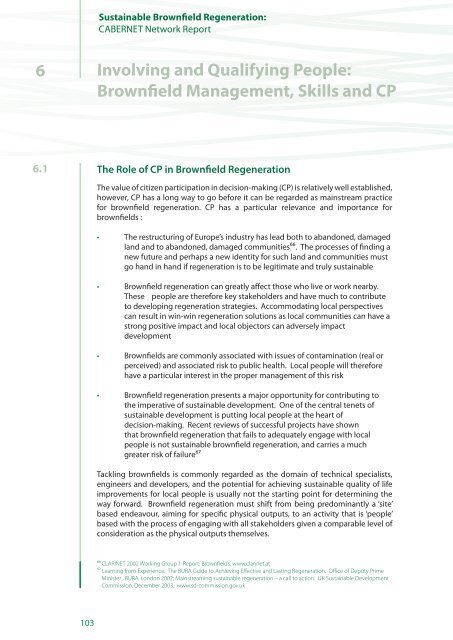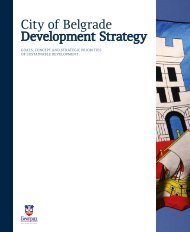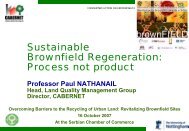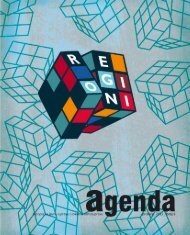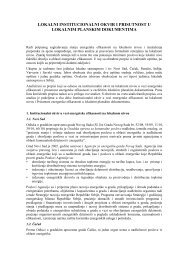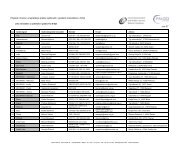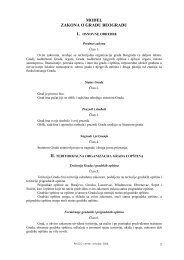Sustainable Brownfield Regeneration: CABERNET Network Report
Sustainable Brownfield Regeneration: CABERNET Network Report
Sustainable Brownfield Regeneration: CABERNET Network Report
Create successful ePaper yourself
Turn your PDF publications into a flip-book with our unique Google optimized e-Paper software.
<strong>Sustainable</strong> <strong>Brownfield</strong> <strong>Regeneration</strong>:<strong>CABERNET</strong> <strong>Network</strong> <strong>Report</strong>6Involving and Qualifying People:<strong>Brownfield</strong> Management, Skills and CP6.1 The Role of CP in <strong>Brownfield</strong> <strong>Regeneration</strong>The value of citizen participation in decision-making (CP) is relatively well established,however, CP has a long way to go before it can be regarded as mainstream practicefor brownfield regeneration. CP has a particular relevance and importance forbrownfields :• The restructuring of Europe’s industry has lead both to abandoned, damagedland and to abandoned, damaged communities⁶⁶. The processes of finding anew future and perhaps a new identity for such land and communities mustgo hand in hand if regeneration is to be legitimate and truly sustainable• <strong>Brownfield</strong> regeneration can greatly affect those who live or work nearby.These people are therefore key stakeholders and have much to contributeto developing regeneration strategies. Accommodating local perspectivescan result in win-win regeneration solutions as local communities can have astrong positive impact and local objectors can adversely impactdevelopment• <strong>Brownfield</strong>s are commonly associated with issues of contamination (real orperceived) and associated risk to public health. Local people will thereforehave a particular interest in the proper management of this risk• <strong>Brownfield</strong> regeneration presents a major opportunity for contributing tothe imperative of sustainable development. One of the central tenets ofsustainable development is putting local people at the heart ofdecision-making. Recent reviews of successful projects have shownthat brownfield regeneration that fails to adequately engage with localpeople is not sustainable brownfield regeneration, and carries a muchgreater risk of failure⁶⁷Tackling brownfields is commonly regarded as the domain of technical specialists,engineers and developers, and the potential for achieving sustainable quality of lifeimprovements for local people is usually not the starting point for determining theway forward. <strong>Brownfield</strong> regeneration must shift from being predominantly a ‘site’based endeavour, aiming for specific physical outputs, to an activity that is ‘people’based with the process of engaging with all stakeholders given a comparable level ofconsideration as the physical outputs themselves.⁶⁶ CLARINET 2002 Working Group 1 <strong>Report</strong>: <strong>Brownfield</strong>s. www.clarinet.at⁶⁷ Learning from Experience. The BURA Guide to Achieving Effective and Lasting <strong>Regeneration</strong>. Office of Deputy PrimeMinister , BURA, London 2002; Mainstreaming sustainable regeneration – a call to action. UK <strong>Sustainable</strong> DevelopmentCommission. December 2003. www.sd-commission.gov.uk103


